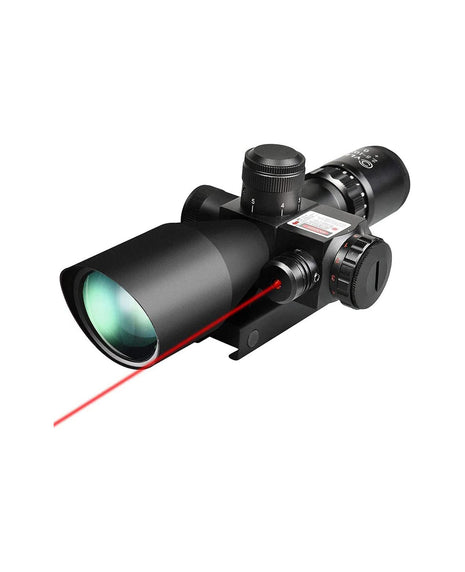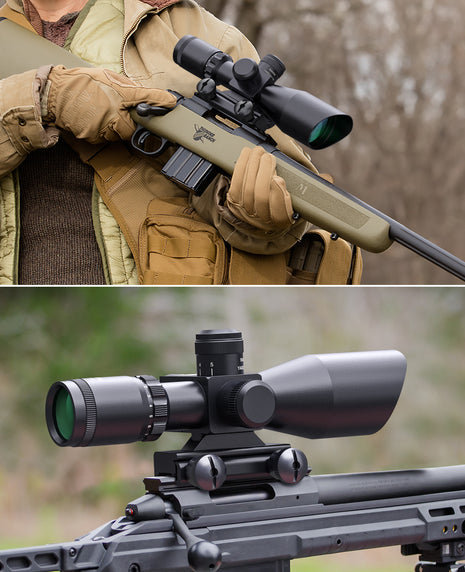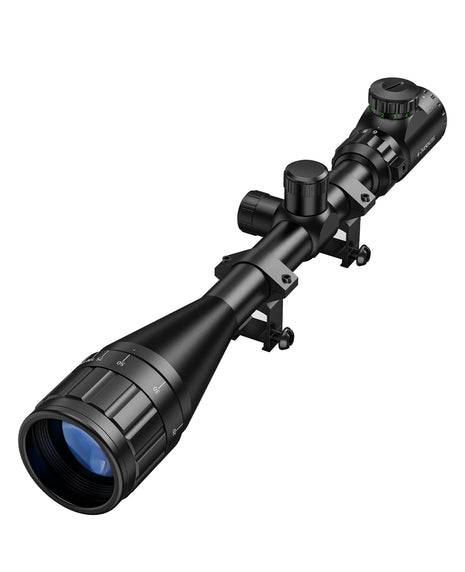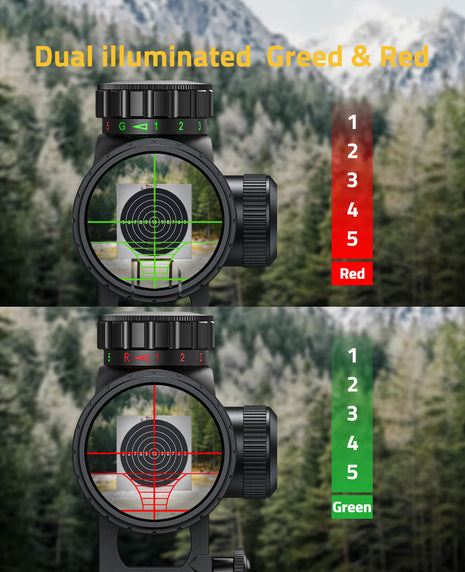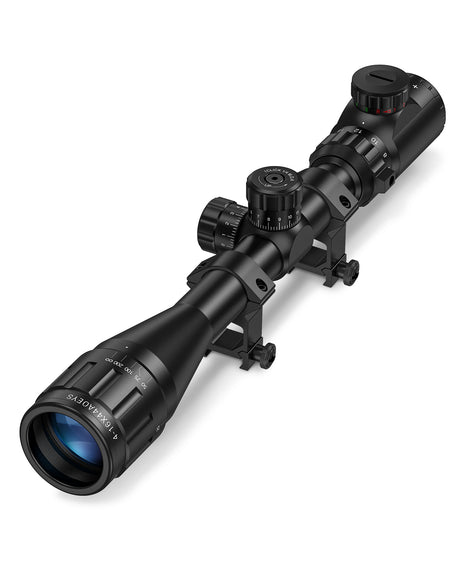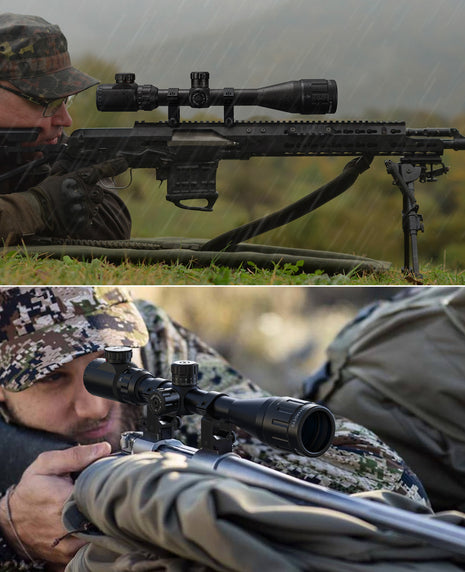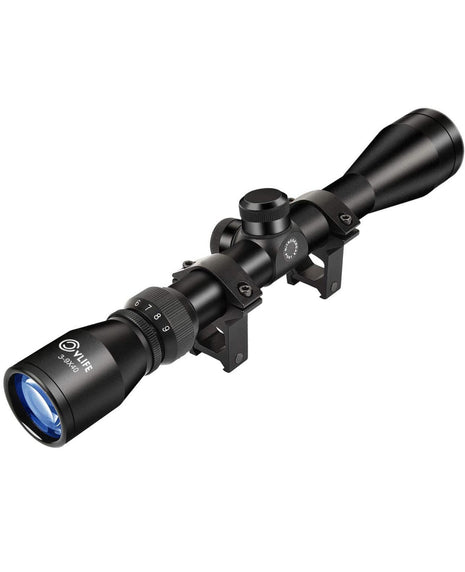The Necessity of Waterproof and Shockproof Scopes: What You Should Consider
- 25 Tiempo mínimo de lectura

Explore the importance of waterproof and shockproof scopes for reliable performance in any environment. Ensure clarity and precision in the field.
When it comes to firearms, tactical equipment, or hunting gear, a high-quality rifle scope can make all the difference. For enthusiasts, professionals, and hunters alike, selecting the right scope involves more than just magnification and clarity. The ability to withstand challenging weather conditions and recoil is essential. This is where waterproof and shockproof scopes come into play. In this guide, we’ll explore why these features are necessary, how they improve the performance of your scope, and what you should consider when purchasing one.
Why Waterproof and Shockproof Scopes Matter
Whether you're a tactical operator, a competitive shooter, or an avid hunter, the reliability of your rifle scope is paramount, especially when you're depending on it in demanding environments. In the field, your scope is more than just an accessory—it's a critical component of your shooting system. The reality is that weather conditions and recoil are inevitable, and both can take a toll on your optics if they are not designed to handle these challenges.
For tactical operators, exposure to rain, snow, or even dust can occur in the heat of a mission, and a non-waterproof scope could become unusable if moisture gets inside, causing fogging or rust. Similarly, extreme recoil, especially when firing high-caliber rounds, can misalign or damage an unprepared scope, causing it to lose zero and rendering it unreliable. For competitive shooters, precision and consistency are everything. A shockproof scope that can withstand repeated impacts from recoil ensures that your sight alignment remains unchanged, allowing you to maintain a steady aim and hit targets with accuracy shot after shot.
As a hunter, you might find yourself out in rugged, unpredictable conditions, from hunting in a downpour to navigating dense forests or mountainous terrains. In these scenarios, your scope must not only be waterproof but also shockproof, ensuring it stays intact despite accidental drops or impacts with rough surfaces. A durable scope guarantees that you won't have to cut your hunting trip short because of malfunctioning equipment, and it keeps you prepared for any environmental factor that could disrupt your shot.
Ultimately, selecting a scope built to endure harsh conditions is essential for maintaining performance and ensuring that your optic system functions optimally in any environment. Waterproof and shockproof features are not just nice-to-haves—they are necessities for anyone who needs their gear to work reliably, regardless of the weather, terrain, or recoil they face. Choosing a scope with these qualities means ensuring that your aim, clarity, and precision remain intact, no matter where your adventures take you.
Waterproofing: Ensuring Your Scope Survives the Elements
When you're out in the field, whether you're hunting, participating in a tactical operation, or engaging in long-range shooting, environmental factors like rain, snow, or high humidity can significantly impact your ability to maintain a clear and consistent line of sight. Fogging, moisture buildup, and water damage can quickly compromise your optics, causing blurry images, inaccurate readings, or even complete equipment failure. In these challenging conditions, having a waterproof scope is crucial. A well-designed waterproof scope ensures that both the lens and the internal components of the scope are shielded from the damaging effects of moisture, keeping your optics clear and fully functional no matter what the weather throws your way.
Many high-quality waterproof scopes feature advanced construction techniques like nitrogen purging or O-ring seals, both of which are essential in preventing fogging and water ingress. Nitrogen purging involves filling the scope's body with dry nitrogen gas, which displaces any internal moisture and creates an inert environment that resists condensation inside the scope. This helps maintain a clear view even when transitioning from hot to cold environments or when exposed to sudden changes in temperature, which can otherwise cause fogging. O-ring seals, on the other hand, are used to tightly seal the scope, preventing water, dust, and debris from entering the optic housing. These seals provide an extra layer of protection against rain, snow, and humidity, ensuring that your scope remains dry and fully operational, regardless of the conditions you're facing.
With these features, waterproof scopes give shooters the peace of mind to focus on their target, not on their equipment. Whether you're caught in a downpour while tracking game, working in a snowy mountainous region, or operating in a foggy or humid environment, you can trust that your scope will maintain its performance and clarity, allowing you to keep your aim steady and your target in focus. Ultimately, investing in a waterproof scope isn't just about protecting your gear—it's about ensuring you have the reliability and precision you need when the stakes are high and the weather is unpredictable.
Shockproof: Protecting Your Scope from Recoil and Impact
Every time you pull the trigger on your rifle, the scope is subjected to a significant amount of recoil, a force that can jolt the optics, components, and internal mechanisms. Over time, this repeated impact can take its toll on lower-quality scopes, causing them to lose their zero—meaning the point of impact no longer aligns with the point of aim—or, in more extreme cases, to break apart altogether. This loss of accuracy can be frustrating and dangerous, especially in high-stakes situations where precision is paramount. To prevent this from happening, shockproof scopes are engineered to absorb and withstand the intense recoil forces, ensuring that your sight remains accurate and reliable, shot after shot.
These shockproof scopes are designed with durability and resilience in mind. They are typically constructed from materials known for their strength and shock-absorbing qualities, such as aircraft-grade aluminum or high-performance shock-absorbing polymers. Aircraft-grade aluminum is lightweight yet incredibly strong, making it an ideal material for the body of a scope. It can withstand the shock of recoil without warping, cracking, or degrading over time. Shock-absorbing polymers, on the other hand, are often used in internal components or for additional external reinforcement. These materials are engineered to dampen the energy produced by recoil, dispersing it across the structure to minimize the impact on delicate internal parts.
In addition to the robust construction, many shockproof scopes feature specialized internal mechanisms that are designed to maintain the integrity of the optical system under recoil. These may include recoil-resistant reticles, reinforced lens assemblies, and shock-dampening systems that absorb the force of the impact. The result is a scope that can maintain its zero and retain consistent performance even after hundreds or thousands of rounds.
For hunters, sport shooters, or tactical professionals, investing in a shockproof scope is essential for ensuring long-term reliability, especially in high-recoil environments. Whether you're shooting a heavy-caliber rifle, a high-powered hunting rifle, or a tactical firearm, a shockproof scope provides the added security that your sight will stay true, even under the harshest recoil forces. With this level of protection, you can trust that your equipment will keep pace with your shooting, providing the clarity, precision, and performance you need to stay on target.
What to Look for in a Waterproof and Shockproof Scope
When choosing a waterproof and shockproof scope, there are a few key factors to consider. These features can make or break your shooting experience, so it’s important to ensure that the scope you select meets your specific needs.
Waterproof Rating (IP Rating)
The International Protection (IP) rating system is a globally recognized standard used to assess the level of protection a device, such as a scope, provides against both solid particles and liquids. This rating system is designed to give users clear, concise information about how well the device can withstand environmental elements like dust, dirt, water, and moisture, making it an essential factor when choosing a scope for various outdoor and tactical applications.
 The IP rating is composed of two digits. The first digit refers to the level of protection against solid objects, ranging from 0 (no protection) to 6 (dust-tight protection), with intermediate numbers indicating varying degrees of resistance to objects like dust, dirt, and debris. For example, a scope with a rating of IP5X would be protected against dust ingress to a certain extent, while a rating of IP6X would indicate that the scope is completely sealed against dust and particles, ensuring that no foreign objects can get inside and damage the internal mechanisms.
The IP rating is composed of two digits. The first digit refers to the level of protection against solid objects, ranging from 0 (no protection) to 6 (dust-tight protection), with intermediate numbers indicating varying degrees of resistance to objects like dust, dirt, and debris. For example, a scope with a rating of IP5X would be protected against dust ingress to a certain extent, while a rating of IP6X would indicate that the scope is completely sealed against dust and particles, ensuring that no foreign objects can get inside and damage the internal mechanisms.
The second digit in the IP rating system indicates the scope's level of protection against liquids, such as water. This scale ranges from 0 (no protection) to 9K (protection against high-pressure steam or water). For example, a rating of IPX4 means the scope is resistant to splashing water from any direction, while a rating of IPX7 is more robust, indicating that the scope can be fully submerged in water up to a depth of 1 meter for a limited time (usually around 30 minutes), without suffering any damage. Scopes with a rating of IPX7 or higher are considered highly water-resistant, offering protection in a variety of wet conditions, from light rain to accidental submersion.
When choosing a scope for outdoor, hunting, or tactical use, it is advisable to look for models with an IPX7 rating or higher. This ensures that the scope is waterproof and capable of withstanding challenging weather conditions, such as rain, snow, or even immersion in water during accidental drops or floods. For those using their scopes in extreme conditions, such as in maritime environments or in heavy rain, opting for scopes rated IPX8 or higher provides even greater peace of mind, as these scopes are capable of withstanding continuous submersion at greater depths.
In addition to protecting against water, an IPX7 or higher-rated scope is also more resistant to damage from other environmental elements like dust, dirt, and extreme temperatures. This makes it an ideal choice for those who need reliable, durable optics in harsh or unpredictable conditions, ensuring that the scope will continue to perform accurately and maintain its integrity even in the face of challenging weather or terrain. Whether you're using your scope for hunting in rainy forests, tactical operations in wet conditions, or shooting in snowy environments, a high IP rating provides confidence that your equipment will stay protected and operational.
Shockproof Construction
A scope's shockproof rating is a critical factor in determining its durability and reliability, specifically in how well it can withstand the intense forces generated by firearm recoil. Recoil, particularly from high-caliber firearms or heavy magnum rifles, can exert significant pressure on the internal components of a scope. Without adequate shockproof protection, repeated exposure to these forces could lead to misalignment, lens distortion, or even complete failure of the scope’s internal mechanisms, which would compromise accuracy and overall performance.
For shooters who use powerful firearms with substantial recoil, such as large hunting rifles, magnum calibers, or tactical weapons, a shockproof-rated scope becomes essential. These types of firearms produce much greater force upon firing compared to standard weapons, and a scope without sufficient recoil resistance could experience significant damage after just a few shots. In contrast, a shockproof scope is specifically designed to handle these stresses, ensuring that the scope's optics, reticle, and other critical components remain intact and operational, even after repeated exposure to heavy recoil.
 To achieve shockproof performance, these scopes are often constructed from high-strength materials like aircraft-grade aluminum or other reinforced metals, which can absorb and distribute the energy from recoil without compromising the structural integrity of the scope. Additionally, many shockproof scopes incorporate advanced internal components, such as precision-engineered lens assemblies and durable reticles, which are designed to remain aligned and unaffected by the vibrations and forces produced during shooting.
To achieve shockproof performance, these scopes are often constructed from high-strength materials like aircraft-grade aluminum or other reinforced metals, which can absorb and distribute the energy from recoil without compromising the structural integrity of the scope. Additionally, many shockproof scopes incorporate advanced internal components, such as precision-engineered lens assemblies and durable reticles, which are designed to remain aligned and unaffected by the vibrations and forces produced during shooting.
Manufacturers of shockproof scopes typically conduct rigorous testing to ensure that their products can withstand various levels of recoil. This testing may involve subjecting the scope to recoil forces similar to those produced by powerful firearms, including simulated firing tests and real-world field conditions. The scopes are then evaluated for durability, with special attention paid to their ability to retain zero (the scope's point of impact alignment) and ensure consistent accuracy over time. Scopes with higher shockproof ratings have typically undergone more extensive and extreme testing, often guaranteeing that they can withstand even the harshest recoil environments without any degradation in performance.
When selecting a scope, it is important to look for models that advertise a high level of shockproof resistance. Scopes with a shockproof rating of 1000-2000 g (gravitational forces) or higher are generally considered capable of handling the recoil from powerful firearms. Some high-end scopes are even rated to withstand extreme recoil levels from large-caliber rifles or magnum firearms, providing confidence that the scope will not lose its zero or fail under sustained, heavy use. This makes them especially valuable for hunters, competitive shooters, or tactical operators who rely on consistent performance under demanding conditions.
Additionally, shockproof-rated scopes are ideal for those who plan to use their rifles in rugged environments or participate in long shooting sessions where recoil may accumulate over time. With a durable, shock-resistant scope, shooters can focus on their accuracy and target acquisition without worrying about the reliability of their equipment. Whether used in the field for hunting, at the range for precision shooting, or in tactical operations where high recoil is common, a shockproof-rated scope provides enhanced durability, longevity, and overall performance.
Fogproof Features
Fogging is a prevalent issue encountered by optics users, particularly when transitioning between environments with significantly different temperatures. This problem arises because the air inside the scope may be warmer or more humid than the surrounding external environment, causing moisture to condense on the lenses or internal components. Fogging can obstruct your view and impact the performance of your scope, making it difficult to aim accurately and effectively. This issue is especially troublesome in hunting, tactical, or outdoor shooting situations where conditions can change rapidly, such as moving from a heated indoor space to a cold, frosty outdoor environment, or when transitioning between areas of high humidity and dry air.
 To combat this problem, many high-quality scopes incorporate nitrogen purging, a technique that helps prevent fogging by replacing the air inside the scope with dry, inert nitrogen gas. The purging process involves filling the scope’s internal chambers with nitrogen, which is then sealed inside. Since nitrogen is an inert gas, it doesn’t support moisture formation like regular air, significantly reducing the chances of condensation inside the scope. This ensures that the internal environment remains dry, even when the external conditions fluctuate between hot and cold, or when the scope is exposed to high humidity levels.
To combat this problem, many high-quality scopes incorporate nitrogen purging, a technique that helps prevent fogging by replacing the air inside the scope with dry, inert nitrogen gas. The purging process involves filling the scope’s internal chambers with nitrogen, which is then sealed inside. Since nitrogen is an inert gas, it doesn’t support moisture formation like regular air, significantly reducing the chances of condensation inside the scope. This ensures that the internal environment remains dry, even when the external conditions fluctuate between hot and cold, or when the scope is exposed to high humidity levels.
Nitrogen purging is particularly valuable in humid or cold weather conditions, where condensation is most likely to occur. In humid conditions, the air is saturated with moisture, and when a scope is exposed to temperature changes, such as moving from a warm car into the cold outdoors, the moisture in the air can condense on the cold surfaces of the lenses and internal components, leading to fogging. Similarly, in cold weather, condensation can form when the scope moves between areas of different temperatures, such as from an indoor, heated environment to an outdoor, freezing one. In these situations, the nitrogen inside the scope helps to ensure that there is no moisture present to cause fogging, even in extreme weather conditions.
Besides preventing fogging, nitrogen purging also plays a role in making scopes waterproof. Nitrogen’s inert properties not only help to reduce internal moisture but also protect the scope from corrosion or degradation caused by exposure to water, ensuring that the internal mechanisms and lenses remain intact and free from damage over time. This makes nitrogen-purged scopes ideal for use in rainy, snowy, or wet environments, where the risk of internal moisture buildup can be high.
The benefits of nitrogen purging go beyond just fog prevention. It enhances the overall durability and reliability of the scope, ensuring that the optics perform well under diverse and challenging weather conditions. This is essential for hunters, outdoor enthusiasts, and tactical professionals who require their scopes to perform consistently, even when subjected to extreme environmental changes.
When selecting a scope for outdoor use, it’s important to look for models that advertise nitrogen purging as a feature, especially if you plan on using the scope in varying climates or during activities that expose the optics to frequent temperature shifts. Scopes with nitrogen purging offer superior resistance to fogging, ensuring that your view remains clear and your shooting experience remains uninterrupted, regardless of the conditions you face. Whether you're hunting in the early morning chill, shooting in the rain, or navigating through foggy terrain, a nitrogen-purged, waterproof scope ensures you stay on target with a consistently clear view.
Durability and Materials
The materials used in the construction of your scope play a vital role in determining its overall durability, performance, and resistance to environmental factors. Two of the most important attributes for a high-performance scope are waterproofing and shock resistance, both of which are significantly influenced by the materials chosen for the scope’s housing, lenses, and internal components. In order to withstand the rigors of outdoor environments and heavy use, manufacturers typically employ advanced materials that ensure the scope is both robust and long-lasting.
High-quality aluminum alloys are one of the most commonly used materials in shockproof scopes due to their excellent combination of lightness and strength. Aluminum alloys are lightweight, which helps keep the overall weight of the scope manageable for extended use, especially in hunting or tactical scenarios where mobility is key. At the same time, these alloys are incredibly strong and resistant to corrosion, making them ideal for waterproofing. The resilience of aluminum ensures that the scope can withstand rough handling and impacts without compromising its structural integrity. Furthermore, aluminum’s thermal conductivity helps regulate internal temperatures, preventing any significant temperature swings that could cause fogging or condensation inside the scope. This makes it especially beneficial for use in extreme environments, whether in hot, dry conditions or cold, wet weather.
Steel is another critical material used in the construction of many high-end scopes. While it’s heavier than aluminum, steel’s incredible strength and resistance to deformation make it an excellent choice for high-impact, high-stress situations. Steel components are commonly found in the internal mechanisms of scopes, such as in the turrets, adjustment knobs, and lens mountings, where durability is of the utmost importance. Steel also adds to the shock resistance of the scope, ensuring that it can handle the recoil from high-caliber firearms, rough handling, or drops without sustaining damage. Additionally, steel’s natural resistance to rust and corrosion helps maintain the integrity of the scope, especially in environments with exposure to moisture, rain, or saltwater.
Impact-resistant polymers are frequently used in the outer casing or external components of shockproof scopes, often as part of a composite material design. These polymers are engineered to absorb and dissipate shock, protecting the scope from bumps, drops, and other physical impacts that might otherwise damage more fragile parts. Modern polymers used in high-end scopes are also highly resistant to cracking or shattering, ensuring that the scope remains intact even if subjected to extreme forces. These materials are particularly valuable in situations where the scope may experience frequent jolts or rough handling, such as in tactical operations, military settings, or for hunters moving through dense forests or rough terrain.
Together, these materials not only enhance performance but also ensure that the scope can stand up to the elements over the long term. A scope made from high-quality aluminum, steel, and impact-resistant polymers will be able to withstand a range of challenging conditions without losing its functionality or compromising its internal components. These materials help keep the scope waterproof, ensuring that moisture, rain, or submersion won’t damage the internal optics or cause fogging. They also ensure shock resistance, allowing the scope to endure the jarring recoil of powerful rifles, rough handling, and accidental drops.
The durability provided by these materials directly contributes to the longevity of the scope. A well-constructed scope can continue to deliver precise and clear performance for years, even with heavy use in harsh environments. Whether you’re using the scope in rain, snow, or extreme temperatures, or taking it on long treks through rugged terrain, the materials used in its construction will help ensure it performs reliably without degradation over time.
Ultimately, the combination of aluminum alloys, steel, and impact-resistant polymers not only improves the functionality and performance of the scope but also significantly increases its overall durability. This means you can count on your scope to withstand everything from extreme environmental conditions to the rough handling typical in hunting or tactical applications, ensuring that it remains in top working condition and provides accurate, clear viewing throughout its life.
Advantages of Waterproof and Shockproof Scopes
1. Reliability in Extreme Conditions
Outdoor activities often expose you to extreme weather and environmental conditions. Waterproof and shockproof scopes ensure that no matter the weather—be it rain, snow, or dust—you can rely on your optics to perform without fail. This is especially important for tactical operations or hunting in rugged terrain.
2. Long-Term Durability
Investing in a high-quality waterproof and shockproof scope may come with a higher price tag, but it pays off in the long run. These scopes are designed for durability, with many offering lifetime warranties. This long-term investment ensures that your equipment performs optimally for years to come.
3. Enhanced Accuracy
A clear, reliable sight picture is essential for accurate shooting. Waterproof and shockproof features contribute to this accuracy by preventing the internal components of the scope from becoming damaged or misaligned. With these features, you can trust that your scope will maintain its zero and deliver consistent performance.
How to Maintain Your Waterproof and Shockproof Scope
Proper maintenance is crucial for keeping your scope in optimal condition. Follow these tips to ensure that your waterproof and shockproof scope lasts as long as possible:
- Always store your scope in a dry, cool place when not in use.
When your scope is not in use, always store it in a dry, cool, and well-ventilated location. Humidity, extreme temperatures, and exposure to moisture can lead to internal fogging, mold growth, and corrosion, especially around the metal components and seals. A temperature-controlled environment will prevent condensation from forming inside the lenses and optics, ensuring they remain clear and free of moisture. Avoid storing your scope in places where it could be exposed to direct sunlight for extended periods, as prolonged heat can cause seals to degrade or warp, potentially compromising the waterproofing and functionality of the scope. If you live in a particularly humid area, consider using silica gel packets or a dehumidifier to further protect the scope from moisture-related damage.
- Clean the lenses regularly with a soft microfiber cloth to avoid scratches.
Lens maintenance is one of the most important aspects of scope care. Over time, dirt, dust, oil, and fingerprints can accumulate on the lens surface, obstructing your field of view. To prevent scratches or permanent damage, always use a soft microfiber cloth for cleaning the lenses. Avoid using any rough materials like paper towels, tissue, or your shirt, as these can introduce tiny abrasions on the lens coatings, diminishing the clarity of your sight picture. Gently wipe the lenses in a circular motion, applying minimal pressure to remove dust and debris. If the lenses are particularly dirty, use a lens brush or a blower to remove loose particles before wiping them down. For stubborn smudges or oils, slightly dampen the cloth with a lens cleaning solution designed for optics, but never apply liquid directly to the lens.
- Inspect the seals and O-rings periodically for any signs of wear.
Seals and O-rings are critical components that ensure your scope remains waterproof and fog-proof. Over time, these rubber seals can degrade due to exposure to temperature changes, UV light, or physical wear. It is important to inspect them regularly, checking for any cracks, tears, or signs of deterioration. If you notice any damage to the seals or O-rings, it is advisable to replace them promptly to maintain the scope’s integrity. Failure to do so could result in water or dust entering the scope housing, leading to fogging, internal damage, or loss of optical performance. Always store your scope in a manner that minimizes stress on the seals, such as keeping it in a case or protective cover when not in use, and be sure to check them before heading out in extreme weather conditions.
- Avoid dropping your scope or exposing it to extreme impacts that could damage its internal structure.
Your scope is a precision instrument, and while it is designed to be durable, it is still vulnerable to damage from rough handling. Dropping the scope or subjecting it to extreme impacts, such as banging against hard surfaces or knocking it against rocks, can damage its internal structure, potentially misaligning the lenses or disturbing the internal mechanics. This may result in a loss of zero or the inability to achieve a proper sight picture. Always exercise caution when handling the scope, and if possible, use a protective case or lens covers when transporting it. If you're using the scope in rugged environments, consider using a shockproof mount or protective housing to further reduce the risk of damage from accidental drops or impacts. Additionally, avoid dropping the scope in a way that could misalign or damage the objective lens or eyepiece, as this can significantly affect the scope’s accuracy and performance.
By adhering to these maintenance tips, you can ensure that your scope remains in excellent working condition for years. Proper care not only protects the scope's external appearance but also ensures its optical clarity, waterproofing, and shock resistance are maintained. Regular maintenance will also improve the accuracy and reliability of the scope, which is essential for any long-term use, whether in hunting, shooting sports, or tactical applications.
Explore more hunting optics and accessories at CVLIFE Official Store.
Frequently Asked Questions
Q: What makes a scope shockproof?
A: Shockproof scopes are made from materials that can absorb recoil without affecting the internal optics. They are designed to withstand high-impact forces, ensuring they stay zeroed even
Tags
- Compartir en:
- Deel
- Tweet
- Póngale un alfiler.
- Messenger
- Correo electrónico
You May Also Like
Blogs & News
-
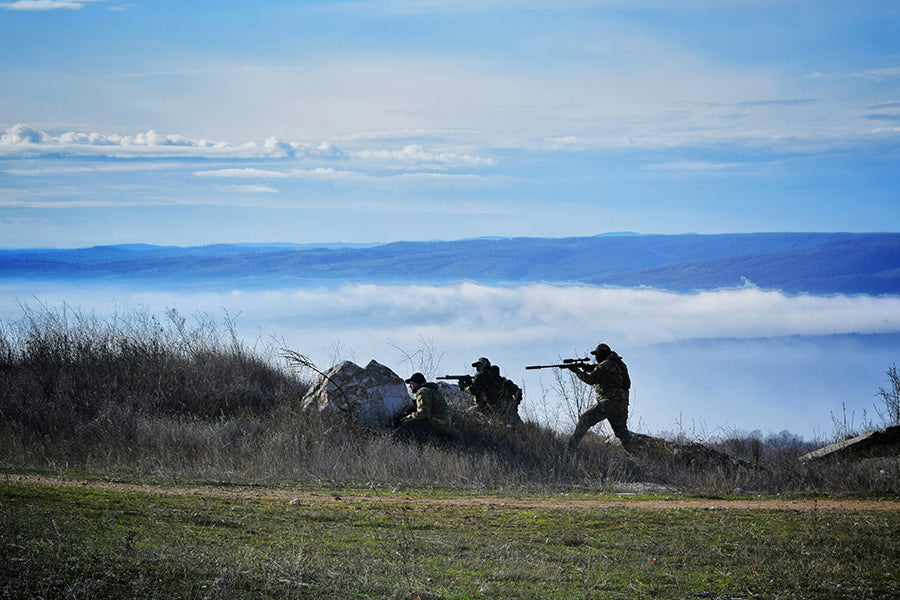
, por C V A Deep Dive into the CVLIFE BearMight ED 6-24x50 FFP Scope
-

, por C V Unleashing the Night: A Deep Dive into the CVLIFE Smart Night Vision Scope
-

, por C V Why Do Some Shooters Prefer Always-On Red Dots?
-

, por C V How to Pick an AO Scope for Low-Light Varmint Hunting

